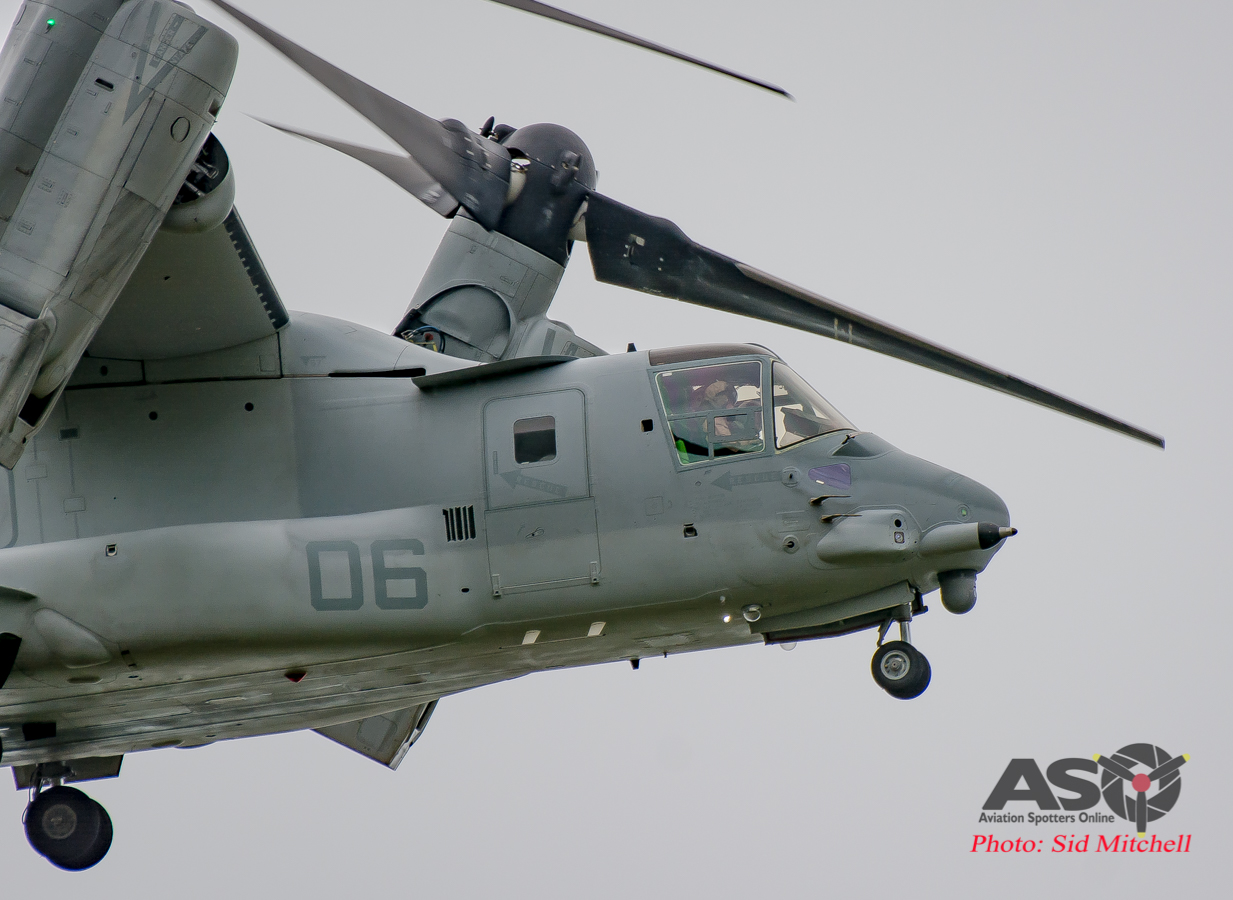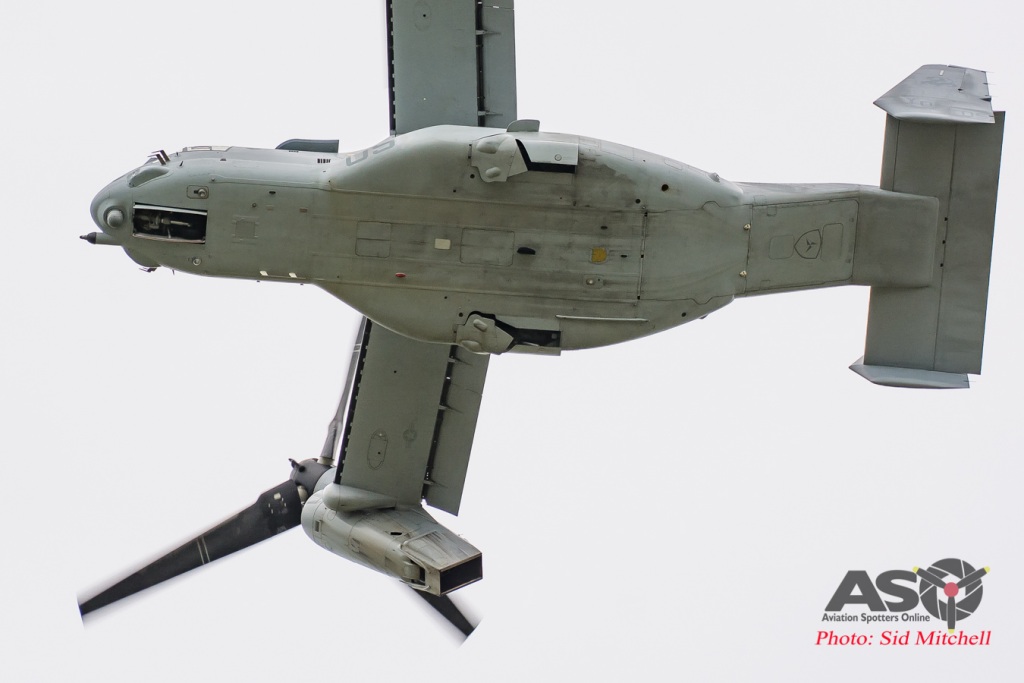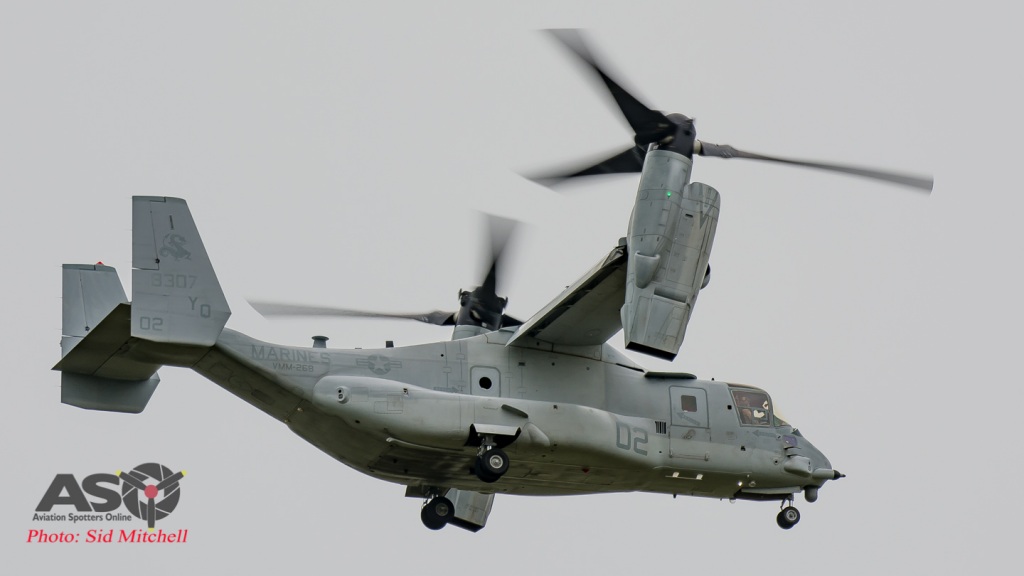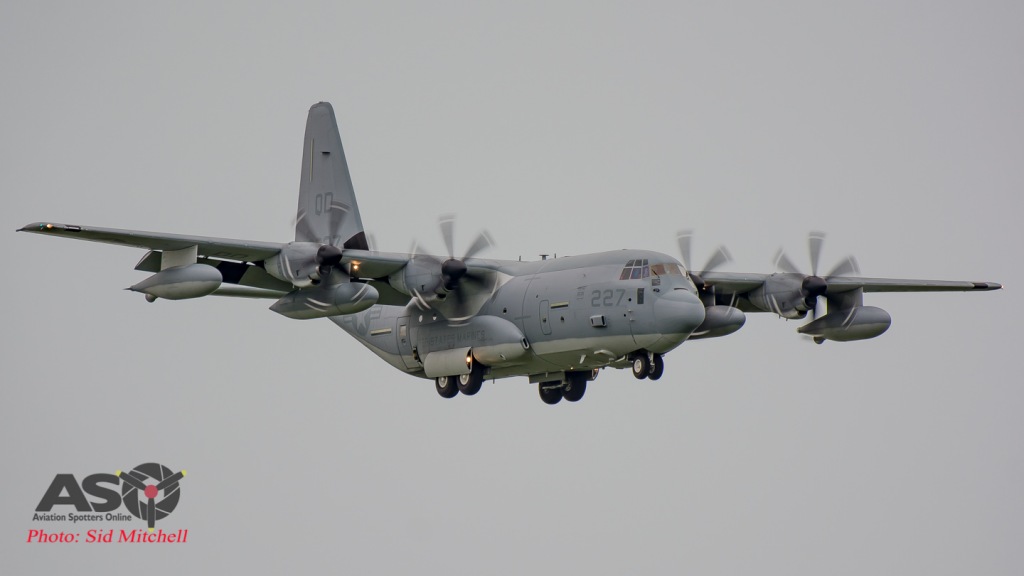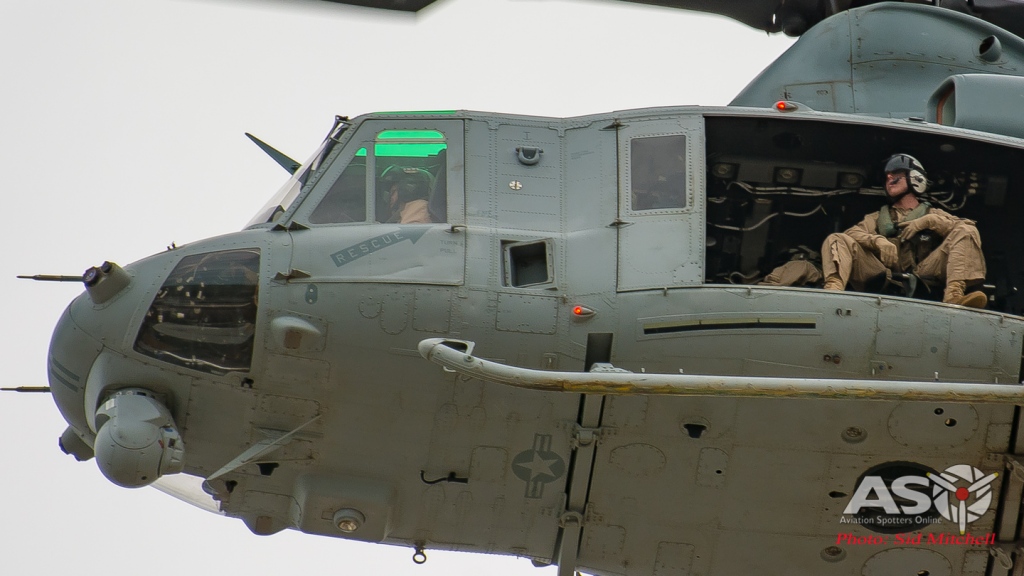On a grey, overcast April afternoon, the final rotary aircraft deployed as part of this year’s Air Combat Element (ACE), in support of Marine Rotational Force – Darwin 2017, pitched into Darwin, NT, Australia. The four MV-22B Ospreys from Marine Medium Tilt Rotor Squadron 268 (VMM-268) ”Red Dragons”, normally based at MCAS Kaneohe Bay, Hawaii, are part of Marine Aircraft Group 24 (MAG-24), 1 Marine Air Wing (1st MAW). This will be the first time VMM-268 have been deployed to Australia, having only reach Full Operating Capacity (FOC) with 12 aircraft in January this year. Another 12 are expected to be delivered by the end of 2018.
The crews have flown the Ospreys to Australia from Hawaii, via Wake Island and Guam with the help of KC-130J refuellers from VMGR-152 “Sumo’s”, who themselves are based at MCAS Iwakuni, in Japan. With a total distance of about 10,000km (6000mi) flown, they have transited large expanses of open ocean over the last week and have finally arrived around the back of a cyclonic depression off the north coast of Australia.
The distinct rotor noise emanating from the Osprey, Super Cobras and Venoms, will again become familiar sounds around the top end of the Northern Territory as they operate to and from the RAAF Base. Flying out to locations such as the Bradshaw Military Training area, less than an hours flight time for the Osprey, the MV-22’s are well suited for operations in Northern Australia. They have been to Darwin for short periods previously, but this is the first time they will spend such a long land based deployment in Australia.
With a range of over 1500km and a cruise speed of just over 500kmh, a crew of 3 plus up to 24 troops, they will be one of the largest and fastest operators during this marine rotation.
They are unique in that they can provide a high speed ‘force connection’ capability, linking forward operating bases to staging landing sites or specific field locations of ground elements, in a very short time. Air to air refuelling capability expands the operating range while high speed reduces the deployment time into the battle space, giving an edge to troop insertion missions. The MV-22 can perform troop insertion and extraction even where a landing is not practical. In the case during the Northern Territory’s dusty dry season, it can also perform restricted visibility landings landings employing a hover type approach from 50 ft into a vertical landing.
This now brings the total Aviation Combat Element (ACE) to 13 aircraft that will be stationed at R.A.A.F Base Darwin, including five AH-1W Super Cobras and four UH-1Y Venom helicopters from Marine Light Attack Attack Helicopter Squadron 367 (HMLA-367) “Scarface”. The HMLA-367 aircraft have been delivered from Hawaii by C-17 Globemaster III from Hickam AFB over the last few weeks with crews already beginning to familiarise themselves with the Darwin airspace.
They have just arrived but ASO certainly looks forward to bringing you some more pics as the weeks progress, or if you can make your way to Darwin there will be plenty of opportunities to catch them airborne yourself.
Cheers…Sid
My gear – Nikon D7100, 15-55mm, 50mm, 70-200mm and 200-500mm. Sandisk SDXC UHS-I memory cards.

